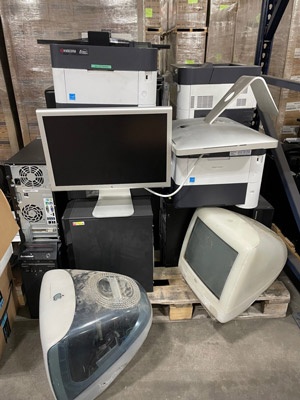 LANSDALE, Pa. — What happens to obsolete computers and discarded old monitors?
LANSDALE, Pa. — What happens to obsolete computers and discarded old monitors?
If you work at Keystone Technologies, an industry-leading lighting and tech company in suburban Philadelphia, you put them to work – again.
Over two weeks in May, Keystone employees brought in ‘90s iMacs, dusty printers, CRT monitors, underpowered desktops, and dead mice for an electronics recycling drive. It’s a way of giving the old products a second life, said Keystone Systems Administrator Jesse LaFlair.
“Recycling electronics is incredibly important,” said LaFlair, who helped lead the e-cycling drive. “Many tech products contain materials that can be either separated, refined, or reused – which is certainly better than having them trashed and sitting around a waste facility forever. Proper e-waste recycling helps keep local communities and the rest of the world cleaner.”
Computers and electronics go through a detailed process after they’re donated. E-cyclers break the machines into parts, and then those materials are further separated. Glass, plastics, and sought-after metals — such as aluminum and copper – are processed and put back into the manufacturing stream. Other components, such as circuit boards and hard drives, are destroyed and shredded. Recycling can find uses for it all, saving that iMac from a landfill.
It’s an important practice. According to Cleanlites Recycling, e-waste represents just 2% of landfill trash, but 70% of the country’s toxic waste.
Keystone employees did their part to move things forward. The company filled several pallets with old computers and electronics, said LaFlair – hundreds of pounds of equipment saved from a landfill.
“Given the challenges of manufacturing new chips and electronics in a world with limited resources, every little bit helps,” said Ira Greenberg, CEO of Keystone. “As a technology company, we recognize our responsibility to be prudent when it comes to these resources, and we’re proud to do our part in helping the environment.”
Tagged with Keystone, lightED